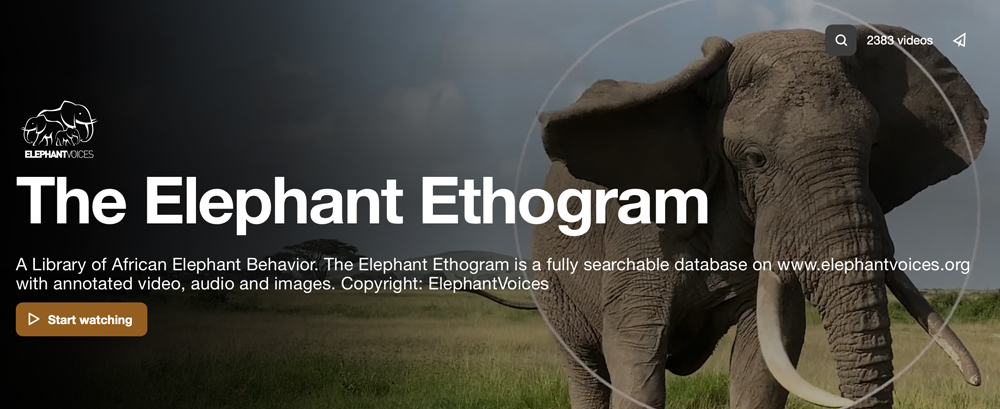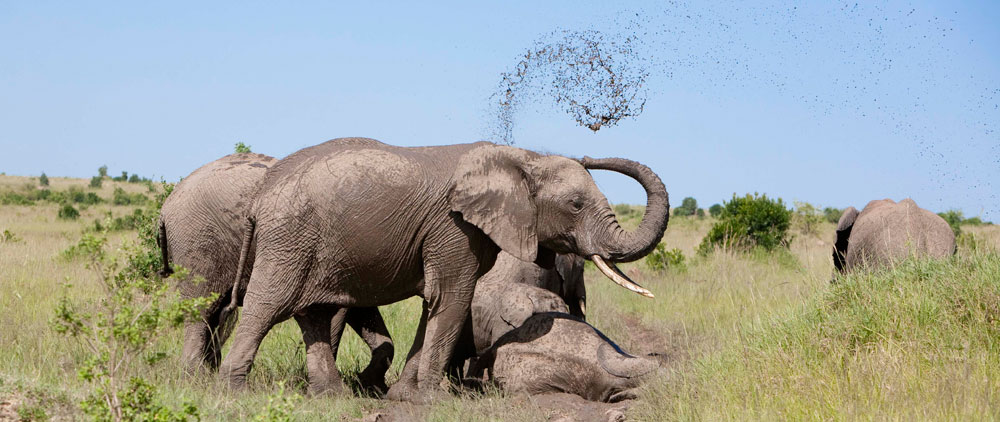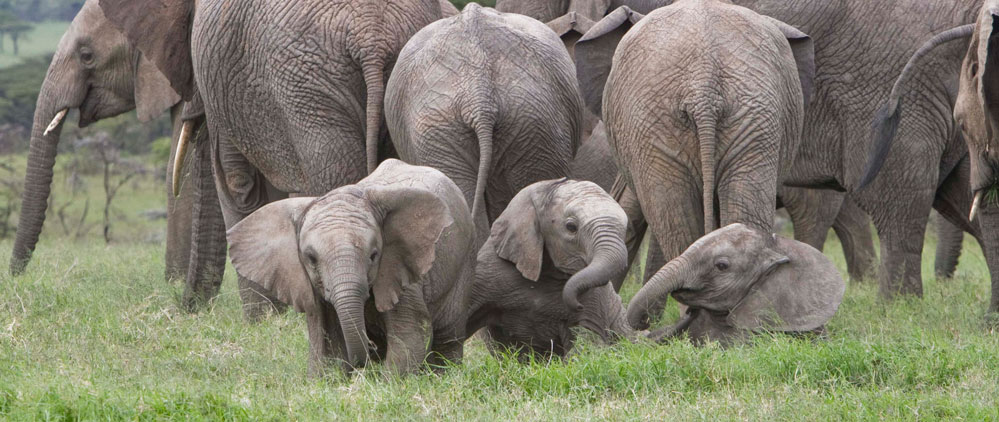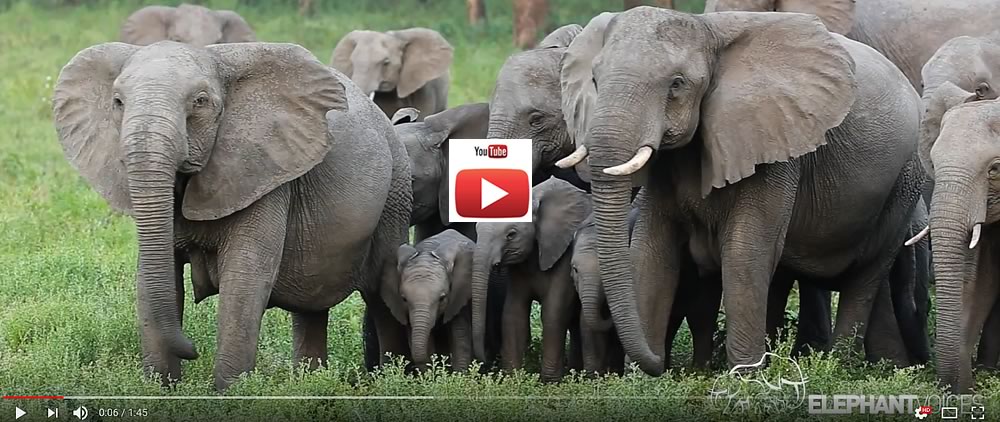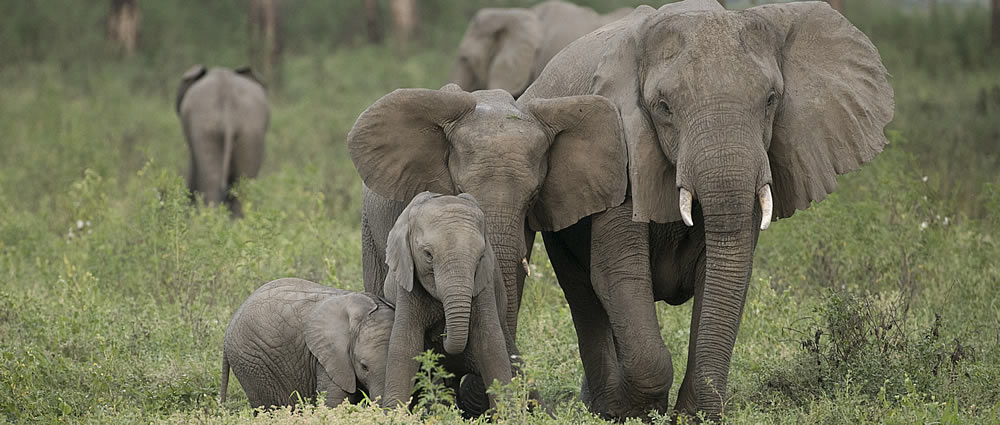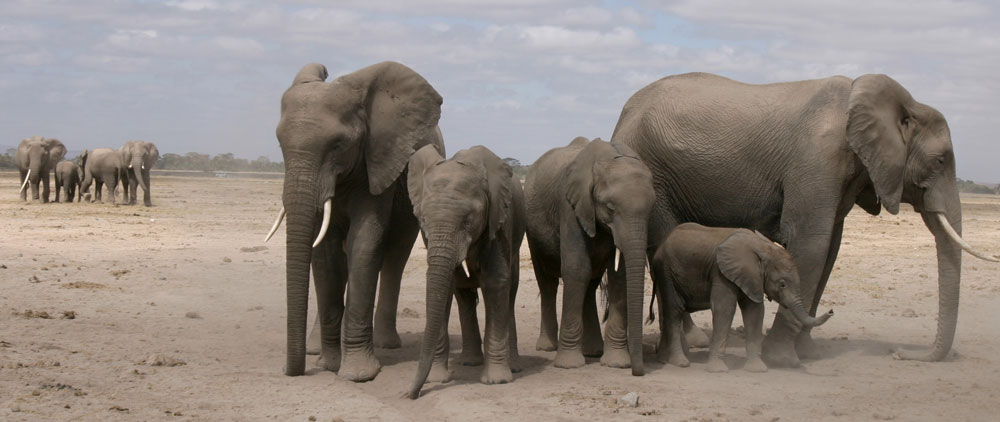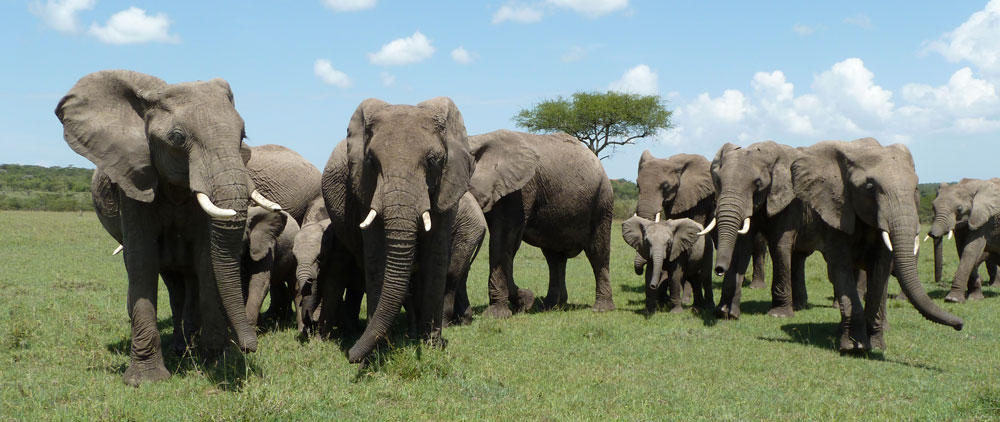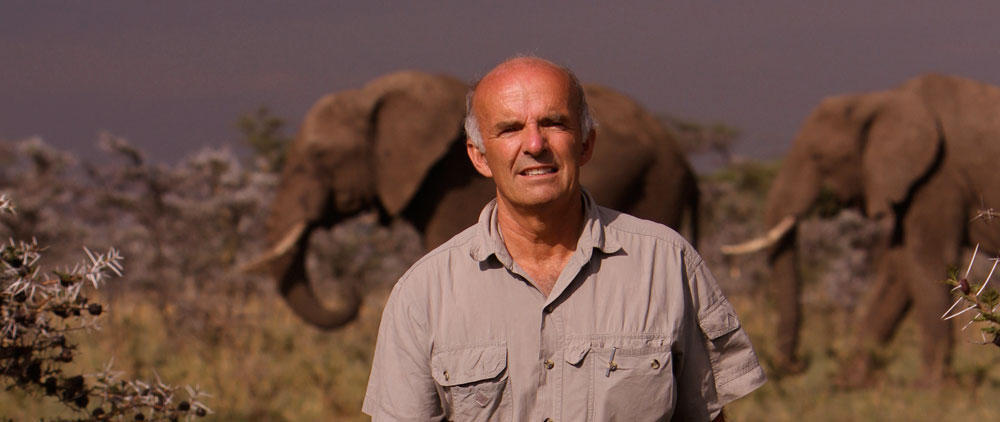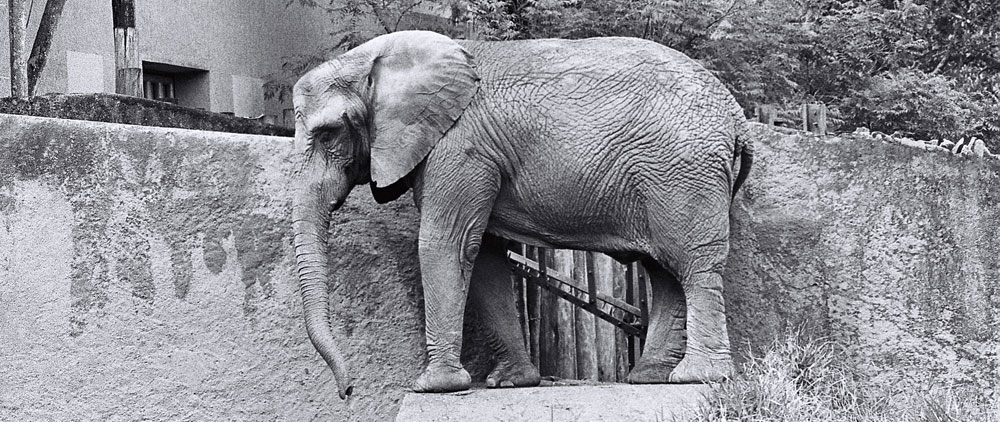vocal learning
-
Acoustic communication
Acoustic (that is, sound) signals are omni directional (i.e. they travel in all directions) and can be broadcast to a large audience of intended and unintended listeners, including those in view and those hidden from view. Being short-lived and deliberate, acoustic signals are useful for giving information about an immediate situation, rather than about a constant state. Through reflection, refraction and absorption, acoustic signals are degraded by the environment in ways that are often very much greater for high frequency sounds than for very low frequency sounds. Elephants are specialists in the production of low frequency sound and in the use of long-distance communication. Check out some good examples on acoustic communication by elephants in article "What Elephant Calls Mean: A User's Guide" published by National Geographic in 2014, based on the work of ElephantVoices.
The range of sounds elephants produce
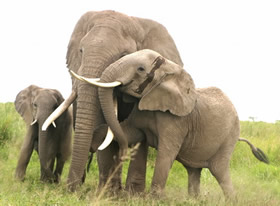 African elephants produce a broad range of sounds from very low frequency Rumbles to higher frequency Snorts, Barks, Roars, Cries and other idiosyncratic sounds. The most frequently used type of call is the very low frequency Rumble. You can search for, listen to and read about numerous calls and other sounds made by elephants on The Elephant Ethogram: A
African elephants produce a broad range of sounds from very low frequency Rumbles to higher frequency Snorts, Barks, Roars, Cries and other idiosyncratic sounds. The most frequently used type of call is the very low frequency Rumble. You can search for, listen to and read about numerous calls and other sounds made by elephants on The Elephant Ethogram: A -
Elephants learn from others
The cohesive structure of the family serves as a defense against predators as well as providing a social environment in which young elephants can mature and learn. Young elephants learn normal behavior in a social context, and learning from others, or social learning, plays a crucial role in their development.
 Calves follow their mothers' responses to learn who are their relatives and friends, and who represent potential threats. They rely on their social companions to learn appropriate behavioral responses to others. Calves gradually acquire foraging knowledge by sampling what the adults around them are eating, and they practice their mothering skills by associating with and following the behavior of mothers of newborn calves.
Calves follow their mothers' responses to learn who are their relatives and friends, and who represent potential threats. They rely on their social companions to learn appropriate behavioral responses to others. Calves gradually acquire foraging knowledge by sampling what the adults around them are eating, and they practice their mothering skills by associating with and following the behavior of mothers of newborn calves.In Tsavo East National Park, Kenya, where orphan elephants from The David Sheldrick Wildlife Trust were slowly released to the wild, contacts with both humans and older elephants provided information to translocated individuals about the new foods in the area, where and when to forage, and how to avoid dangers. These examples of young elephants emulating the behavior of older individuals and becoming more proficient at tool use and foraging techniques with increasing age suggest that social learning across extended periods of time is important in the


